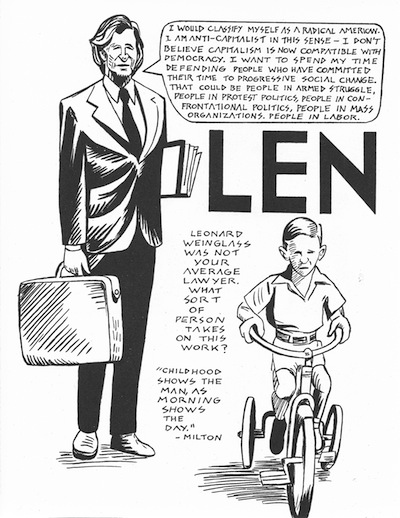 Other defense attorneys may have been more famous — William Kunstler, for example — but radical leftists of a certain age remember the late Leonard Weinglass with special feeling. On the back cover of Seth Tobocman’s graphic biography Len, A Lawyer in History, the publisher’s description says (and I believe every word of it): “In a field dominated by egomaniacs, Weinglass was known for his humility, his common touch, his ability to work collectively, his kindness, and his attention to detail.”
Other defense attorneys may have been more famous — William Kunstler, for example — but radical leftists of a certain age remember the late Leonard Weinglass with special feeling. On the back cover of Seth Tobocman’s graphic biography Len, A Lawyer in History, the publisher’s description says (and I believe every word of it): “In a field dominated by egomaniacs, Weinglass was known for his humility, his common touch, his ability to work collectively, his kindness, and his attention to detail.”
Not least, he was also known for his legal brilliance. Tom Hayden has described him as “learned, funny, and the best damned trial lawyer I ever saw in a courtroom.” It was Weinglass who persuaded an appellate court to overturn the convictions of the Chicago Seven. It was Weinglass who was brought in by Daniel Ellsberg’s defense team in the Pentagon Papers trial to be chief counsel for Ellsberg’s co-defendant Anthony Russo, and Weinglass who was instrumental in getting the charges against both of them — espionage, theft, and conspiracy — thrown out.
It was Weinglass yet again who put the CIA on trial when University of Massachusett students were charged with trespass and disorderly conduct in a mass protest against CIA recruitment on the Amherst campus. Using a “necessity defense,” a strategy he devised with Abbie Hoffman, Weinglass exploited a Massachusetts law that made it legal to commit a crime to prevent a greater crime. He showed at trial that the protesters had broken the law only to prevent the CIA’s greater crimes of murder, kidnapping, and torture. Weinglass put former CIA operatives and government officials on the witness stand and elicited sworn testimony about rogue CIA operations in Nicaragua and elsewhere that were not just violations of human rights. He demonstrated that, because they’d been kept secret from the Congress in violation of the Boland Amendment, they were illegal. The jurors — all blue-collar conservatives, a majority of whom had voted for Ronald Reagan, found the protesters innocent. (Within days, coincidentally, the “Iran-Contra” scandal became news, revealing that Reagan’s minions led by Oliver North had secretly armed rightwing Nicaraguan death squads.)
Weinglass, who died in 2011, took plenty of cases that other criminal defense attorneys wouldn’t take. He once described “the typical call” that came to him: “You’re the fifth attorney we’ve called.” Many of those calls came from defendants most people have never heard of — the black activist author Mumia Abu-Jamal, who has been incarcerated for the past 30 years, much of that time on Pennsylvania’s Death Row; the Puerto Rican independence militant Juan E. Segarra Palmer; Antonio Guererro of the Cuban Five; the American Indian Movement organizers Paul Skyhorse and Richard Mohawk, as well as another Native American, Jimi Simmons.Five years in the making, Len, A Lawyer in History, is a great educational tool because it dramatizes as well as narrates a complex story by streamlining the complications without sacrificing the details. Michael Steven Smith, who co-edited the book with Paul Buhle, writes in the introduction: “Len was not a sixties radical. He was something more unusual: he was a fifties radical. He developed his values, his critical thinking and world view in a time when non-conforming was rare.” Smith points out that Weinglass classified himself as “a radical American” who believed capitalism and democracy had become incompatible and that socialism “if given the chance” could remake society in a workable and democratic way:
He saw his legal work as his contribution to the collective work of the movement. He didn’t care a bit about making a fee. “I want to spend my time defending people who have committed their time to progressive change. That’s the criteria. Now, that could be people in armed struggle, people in protest politics, people in confrontational politics, people in mass organizations, people in labor.” Defending against “the machinery of the state,” as he put it, was his calling.
Have a look at these spreads. They give a sense of the book’s graphic style. (Mouse over the images to read some of the narrative text in a pop-up caption. Click the images and/or the captions to enlarge the spreads.)
Len’s friend and law colleague Michael Krinsky considered him “a modern Clarence Darrow.”
“He wasn’t drawn to making money. He was drawn to defending justice.” — Daniel Ellsberg”
Because the Ellsberg case was thrown out of court
there was no decision as to whether it was legal for Ellsberg to release the Pentagon Papers.
“He felt in many cases he was representing one person standing against the state.” — Daniel Ellsberg
“This was his favorite case. But very little has been written about it.” — Seth Tobocman
When is it possible for an act which is in violation of the law to be justified by necessity? There are three criteria. First, was there a clear and imminent threat? People were dying on November 24th, 1986 as a result of the crimes of the CIA. Second, was the action one that could abate the harm? As Ellsberg has testified, protest is the way the public corrects a wrong throughout our history. Finally, was there a legal alternative? Witnesses have testified that Congress would not restrain the CIA! I think you will find these students’ actions to be justified by necessity, and by so doing you will be joining them in making this a better country and our future more secure. — Leonard Weinglass to the jury

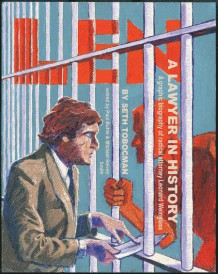
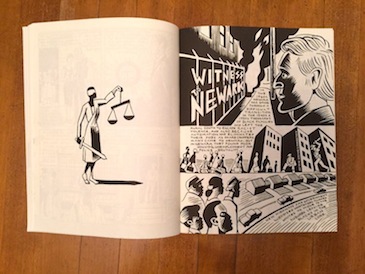
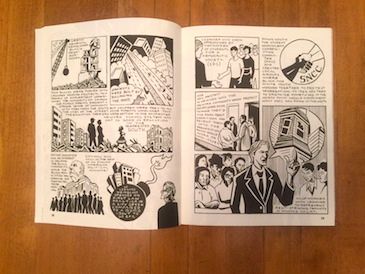
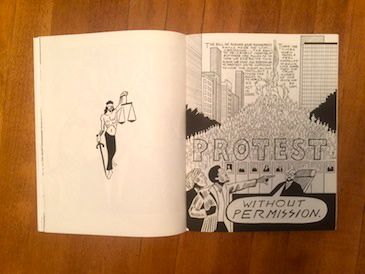
![By 1968 many Americans felt they had exhausted all conventional means in pursuit of peace and justice. An overwhelming majority had elected a peace candidate for president: Lyndon Baines Johnson, the Democrat. [But] LBJ had escalated the war in Vietnam. Through nonviolent civil disobedience legal segregation in the South had ended. But little had changed for blacks in the North. When Martin Luther King was assassinated many felt the time for nonviolence was over. Preparations were made for the 1968 Democratic Convention in Chicago. LBJ was stepping down but Hubert Humphrey, his vice president, was running in his place. Humphrey was expected to continue the war. Peace candidate Eugene McCarthy was not likely to win. Robert Kennedy, the one Democrat who could beat Humphrey, had been shot. Anti-war groups like Mobilization Against the War and the Yippies saw the Democratic convention as an obvious target and planned a number of activities to go on in Chicago. ...](http://www.artsjournal.com/herman/wp/wp-content/uploads/2016/08/p36-37365enh.jpg)
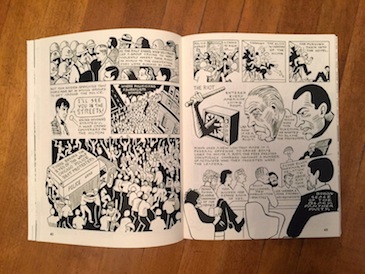
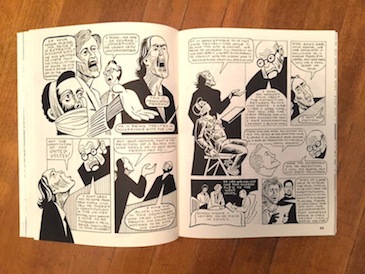
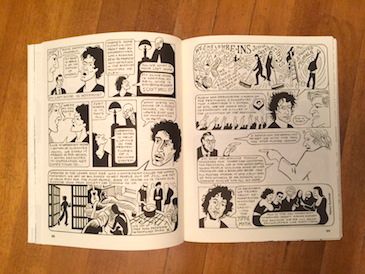
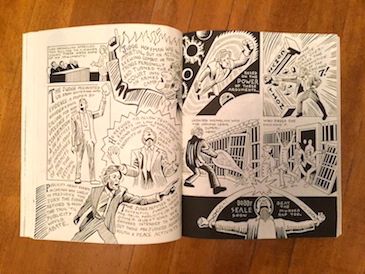
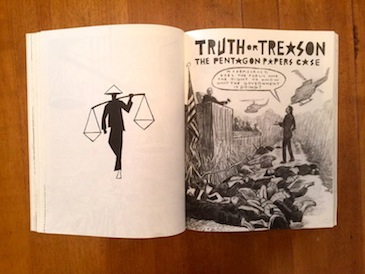
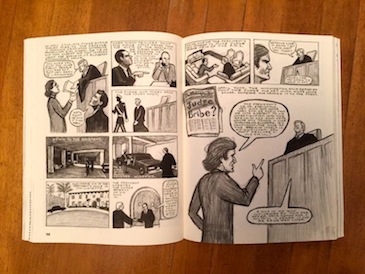
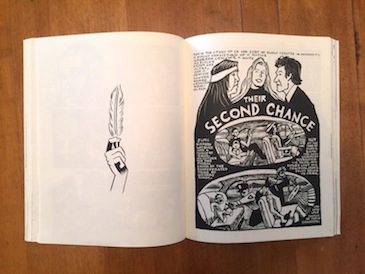
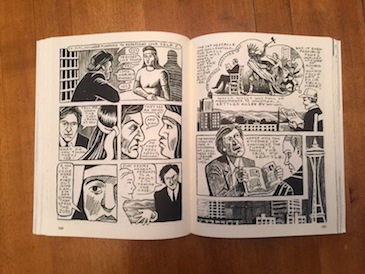
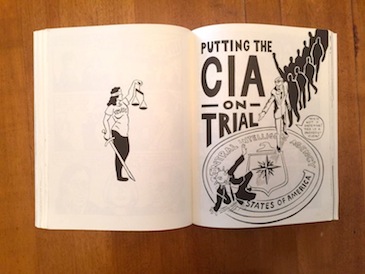

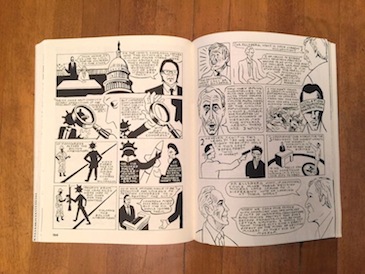
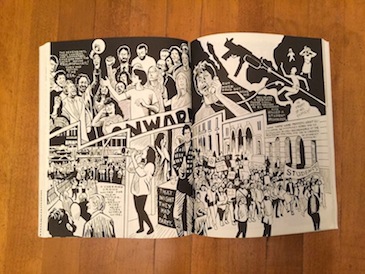
These last two blog entries, this one and the last one about Boris Johnson have been very valuable. I can only imagine the work it takes to write the texts, select the images, and create the layout. It is astounding that you do all of this for free for ArtsJournal. It’s a real service to the community. I know that there are many people who appreciate your work. I will be sharing the info contained in this last entry as widely as I can.
Yes, the process from start to finish is tediously time-consuming. The writing, which is the most important part of the blogpost, often takes the least amount of time. I usually spend more time taking the photos and/or scanning the pages, downloading them, then resizing and enhancing them for clarity, then uploading them — at which point the coding process begins: typing the pop-up captions, linking for enlarging the images, and arranging the layout within the parameters of the AJ site, some of which require trial-and-error workarounds. I’m not much of an up-to-date technician, so the whole process is very Rube Goldberg. But the cause is worth it. So thank you for spreading the word.
Leonard WeinglassI never met.. But no question, no better an artist than Seth to tell his abbreviated history. Seth has his own remarkable history. Thanks for introducing me to Weinglass. WIsh I had met him.